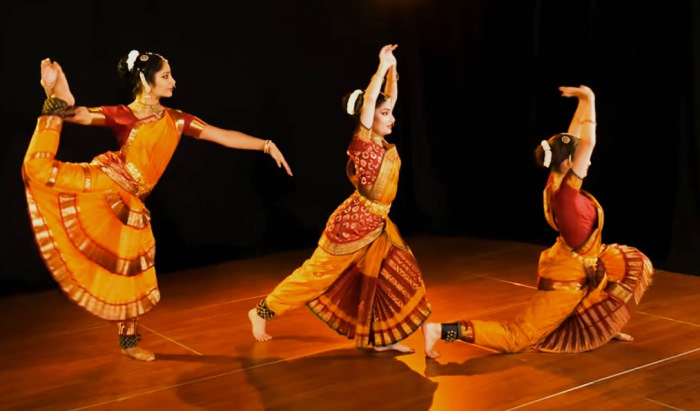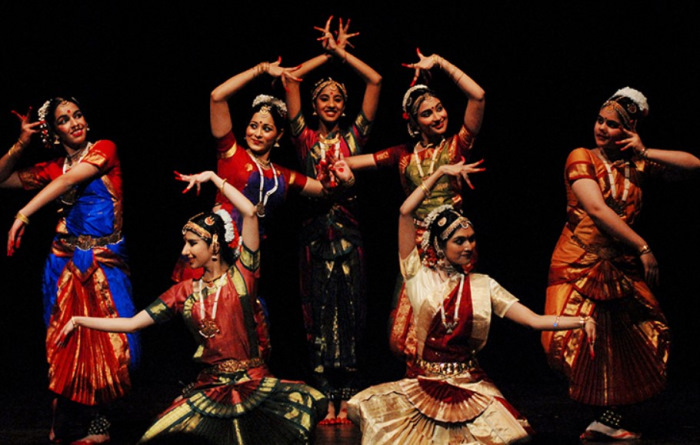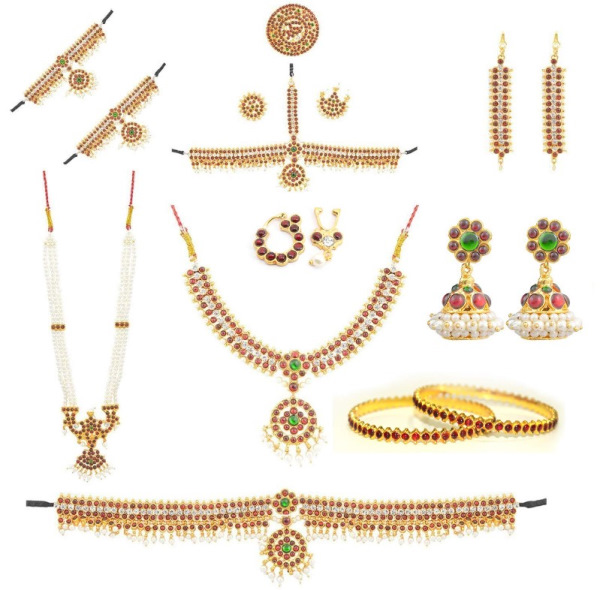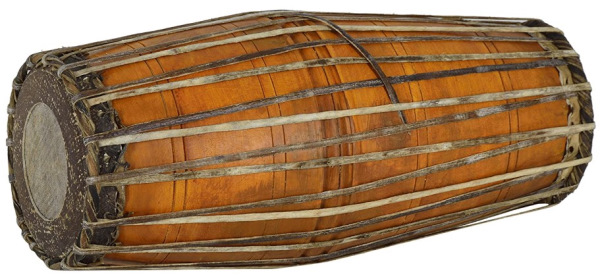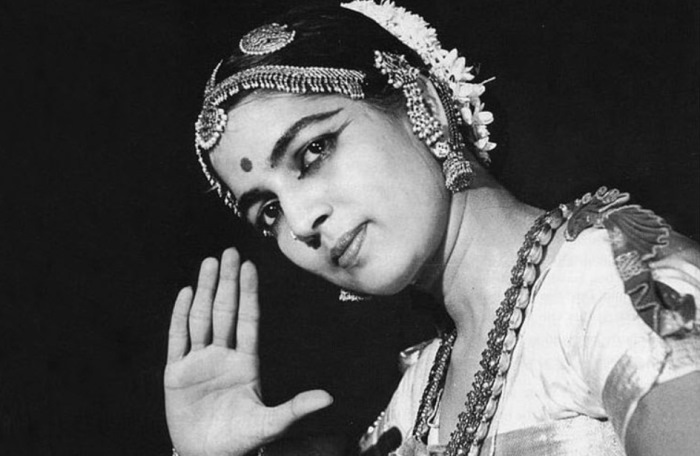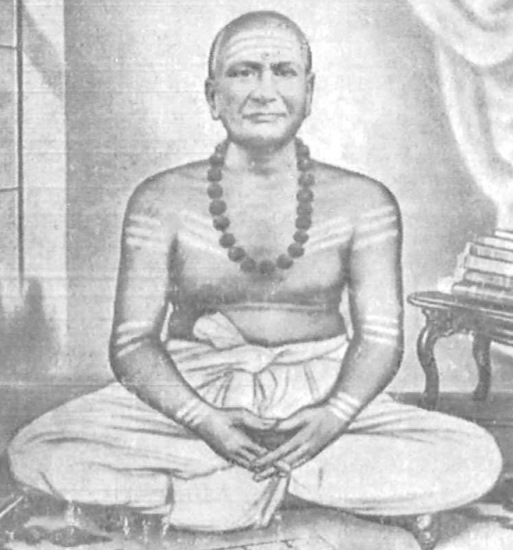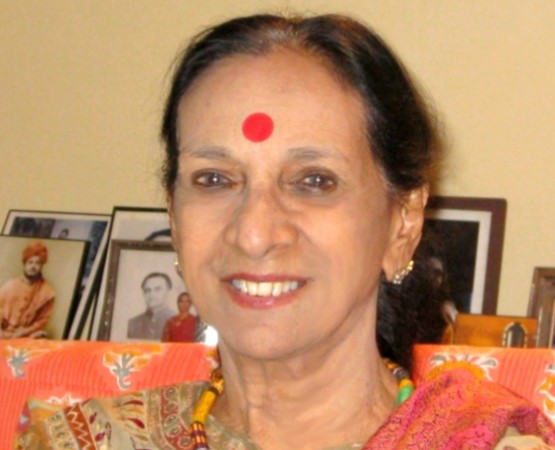India is known for its rich, vibrant, and ancient culture. And if you’re seeking to learn more about the country and its people, you definitely need to hear about the Bharatanatyam dance!
The Bharatanatyam is one of the oldest dance forms in India. Whatever historical records we still have of this dance show that it’s been around for over 2,000 years. Noted for its intricate footwork and hand gestures, along with the dancers’ lively facial expressions and graceful movements, the Bharatanatyam has gained a reputation worldwide as a quintessential oriental dance.
In this article, we will explore the rich history of Bharatanatyam, from the various steps and techniques to the stunning costumes worn by dancers!
Let’s get to it!
Table of Contents
What Is The Bharatanatyam Dance?
The Bharatanatyam is a form of classical dance intimately tied to southern India’s culture and people (in the Tamil Nadu region). It is one of the eight famous classical dance forms of India.
Just a short note on the Bharatanatyam dance: The meaning behind the term “Bharatanatyam” is quite complex. To understand it, you must first break it into two major components: “Bharata” and “Natyam.”
“Bharata” itself is a backronym for three different words. Bha stands for bhavam, meaning “feelings” or “emotions.” Ra is for ragam, meaning “melody.” Lastly, tam is for talam, meaning “rhythm.”
“Natyam” is a pure Sanskrit word, which stands for “dance.”
When you put all of these components together, you get “a dance that expresses emotions (bhavam), melody (ragam), and rhythm (talam).”
Outside of the name, the Bharatanatyam is a beautiful, performative dance that’s often performed solo by female dancers attired in colorful costumes and jewelry.
The choreography is extremely complex. On stage, the dancer’s feet move in complex rhythms while their legs are bent in a signature low squat. Besides their feet, the dancer will have to make use of their arms, neck, and shoulders in performance, too.
In certain sections of the dance (called the “pantomimes section”), the dancer’s hands tell a story (usually revolves around religion or devotion themes) using various gestures.
At the same time, their face conveys the mood and emotional depth of the story. In the pure variation of the Bharatanatyam, the dancer’s hands are limited to using just 11 symbolic hand gestures called “mudras.”
Bharatanatyam Dance Origin & History
Early History
The Bharatanatyam is a very old dance. It’s mentioned in the Kootha Nool, an ancient Tamil Nadu treatise on art and dance. Historians have also seen it being mentioned in the Natya Shastra, a Hindu text on performance arts by Bharata Muni, a sage.
Both of these documents are old, with the Kootha Nool dating back to over 2,000 years ago and the Natya Shastra being completed anywhere between 500 BCE and 500 CE.
One legend that explains the origin of the Bharatanatyam is that Lord Brahma (a major god in Hinduism) revealed the dance to Bharata Muni, who promptly wrote it down for posterity in the Natya Shastra.
According to carvings on a temple of Shiva (a Hindu god) in Kanchipuram, an ancient city in India depicting Bharatanatyam’s dance poses, by the time of the mid-1st millennium CE, it had become a well-established and developed dance form.
In any case, the Bharatanatyam was a millennia-old art. It’s amazing that the dance is still around and is widely practiced today!
Bharatanatyam is widely known as a sort of temple dance since it was most popular in Hindu temples in the Tamil Nadu region. From 300 BCE to 300 CE, the dance was performed by temple dancers known as Devadasis. Royals widely attended their performances, and the dance further grew and evolved, having gained favor from the Indian ruling class.
And despite being accused by later colonial historians and “Indologists,” no records showed that the Devadasis (at least during this era) were courtesans. Instead, all evidence pointed to them being dancers and performers only.
Troubles Under Colonial Rule
Like much of ancient Indian and classical culture, the Bharatanatyam dance was harshly suppressed and subjected to a campaign of erasure by the colonial government.
During the 18th century, the Bharatanatyam was struck down from being a respectable and religious dance to a “contemptuous fun” dance. Viewings and studies of the dance were also discouraged by the colonial government.
Christian missionaries and government officials also cast the Devadasis temple dancers in a bad light, referring to them as “harlots.” Such was the contempt for the dance that in 1892, Christian missionaries launched a campaign to ban the Bharatanatyam (along with many other Indian classical dances) altogether.
In 1910, their effort succeeded. The British colonial government officially banned Hindu temple dancing and the Bharatanatyam was deemed illegal.
Revival
Fortunately, like much of ancient and classical Indian culture, the people still fought to preserve it despite the dance. People like E. Krishna Iyer, an Indian lawyer, activist, and freedom fighter, fought and advocated for the dance. His effort and many others led to the revival of the Bharatanatyam in the late 20th century.
Today, the Bharatanatyam is freely performed everywhere and not just in India … you can find performances in other countries, too! This exotic dance – while not a complete portrayal of the Indian people and their culture – is an excellent introduction to the country’s vibrant and deeply spiritual way of life.
You’ll love: 15 Best Indian Dancers From Classical To Modern Dance
Characteristics Of Bharatanatyam Dance: 3 Categories
The Bharatanatyam dance, like most classical Indian dances, has three main characteristics: Nritta, Nritya, and Natyam. You’ll find these in every single Bharatanatyam performance and repertoire (it’s the reason why they all look and feel so nice to watch!).
Nritta
Nritta refers to the abstract, fast, and rhythmic part of the dance. Basically, this term encapsulates the beauty of the dancer’s movements on stage. Nritta doesn’t involve story-telling, so there are no interpretative or expressive elements to it.
Rather, it’s purely technical and engages with the viewer’s senses.
Satisfying nritta are two things in the Bharatanatyam.
- Hand Gestures (Mudras)
One of the most distinctive features of Bharatanatyam is its use of mudras or hand gestures. These hand gestures are meant to represent the goddess Shiva.
There are over 66 mudras in Bharatanatyam, each with a specific meaning and usage. Typically, they’re used to convey different emotions, actions, and objects in the dance.
The 66 hand gestures are further broken down into three major types of symbols: asamyuta hastas (single-handed gestures), samyuta hastas (double-handed gestures), and nritta hastas (dance hand gestures.)
Nritya
Nritya is the aspect of the dance that conveys the storyline that the dancer wishes to tell as they perform. Typically, the story will revolve around religious and devotional themes in Hinduism.
To achieve this, the dancer must articulate themselves and engage not with just the viewer’s senses, but also their emotions. And they do so through abhinaya.
- Facial Expressions (Abhinaya)
Another important aspect of Bharatanatyam is its use of abhinaya or facial expression.
As they perform, the Bharatanatyam dancer makes various expressions on their faces to convey to the audience the many emotions and moods in the story.
Natyam
Natyam is a supporting element to Nritya. It’s a type of play that’s often used to indicate the introduction of a new character to the story that’s being told in the performance. Dancers will do the introduction by performing a set of standardized body movements.
Check more: Kurdish Dance: Origin, Types, Steps, Music
Styles Of Bharatanatyam
The Bharatanatyam, being a very old dance, has many variations and styles over the centuries it’s been around. The basic elements of the dance remain consistent, of course, but depending on the style of the performance you’re watching, certain moves and feels of the dance will be totally different from another’s.
There are three major styles that are still practiced today: the Vazhuvoor, Melattur, and Thanjavur styles.
Vazhuvoor
The Vazhuvoor style is named after a dance guru and choreographer named Vazhuvoor Ramaiah Pillai. This style is known for its “seductive approaches” and elegant, graceful positions.
The movements of the Vahzuvoor style are said to be complicated and very fast, but delightful to watch.
Melattur
The Melattur style was developed by Mangudi Dorairaja Iyer, a sanyasi (a Hindu religious mendicant.)
Melattur-style Bharatanatyam performances are highly theatrical and dramatic. As a result, out of all the three major styles, the Melattur is the one that utilizes facial expressions (abhinaya) the most.
This style is also noted for its use of ankle bells (salangai) to accentuate the rhythmic stomping motions of the dancer and help them produce sounds to highlight the rhythm of their movements.
Thanjavur
The Thanjavur style, from the city of Thanjavur, is characterized by its broad, sweeping movements.
Rather than highlighting the emotions or elegance within the dance like in the Vazhuvoor style, the Thanjavur style focuses on the geometric postures and movements of the dancer.
Bharatanatyam Performance Sequence
The performance sequence of Bharatanatyam follows a specific order of items or pieces, much like a Western-style ballet or ballroom dance!
1. Alarippu
The performance usually starts with an invocatory piece, known as the Alarippu. In Western music, it’s the equivalent of an overture or a prelude.
The Alarippu is a rhythmic piece that introduces the audience to the dancer’s style, and it includes a salutation to the gods, the guru, and lastly, the audience.
It can also be used as a piece for the dancer to warm up and sharpen their focus for the exercise ahead!
2. Jatiswaram
The next item is Jatiswaram, which is a pure dance sequence without any storytelling (nritta). The dancer demonstrates intricate footwork and rhythmic patterns to the rhythm of the drums.
The point of this item is to present to the audience the unity between the dancer’s movements, the music, and the rhythm.
3. Shabdam
The third item is Shabdam (expressed words). This is where the story begins. The dancer expresses a story through a combination of pure dance and abhinaya, while the vocalist(s) and the band in the background will present short, lyrical compositions to the audience.
It is usually a devotional or romantic piece, with lyrics in the local language or Sanskrit.
4. Varnam
The fourth item, Varnam, is the performance’s central and most complex piece. It combines all components of the Bharatanatyam together into a masterpiece: pure dance, abhinaya, and storytelling.
A typical Varnam can last 30 to 45 minutes. As the dancer performs, they can portray different characters and guide the audience through the stories using their moods (with abhinaya) and their rhythmic movements and footwork.
Meanwhile, the vocalists and the band will set the musical tones for the performance.
5. Padam
The fifth item is Padam, a slow-paced piece that expresses a romantic or devotional theme through abhinaya.
6. Tillana
The sixth item is Tillana, which is basically the dance’s climax. It’s a pure dance piece demonstrating the dancer’s agility and control, signaling the end of the expressive nritya portion and returning to the nritta.
7. Mangalam
The performance concludes with a Mangalam, a piece that expresses gratitude and seeks the blessings of the gods and the people in the audience. Its purpose is basically a curtain call in Western music: a way of expressing thanks and concluding the performance on a positive note.
Bharatanatyam Dance Costume
In all Bharatanatyam performances, the dancers will come on stage wearing traditional Bharatanatyam dance attire.
Women’s Bharatanatyam dance attire
For women, the costume consists of a saree in the style of a Tamil Hindu bridal dress and is specially draped in a way that emphasizes the footwork and movements of the legs.
The saree is usually made of silk, and it is embellished with intricate designs and patterns, often featuring gold or silver thread (zari).
The blouse worn with the saree is typically short-sleeved and fitted, with a high neckline. It is also often embellished with decorative elements such as sequins, beads, or embroidery.
Men’s Bharatanatyam dance attire
Female dancers will also wear additional pieces on their heads to highlight their hairline. Smaller pieces are worn on each side of their parting, which is meant to represent the sun and the moon.
Bharatanatyam dance accessories
Another important component of the Bharatanatyam costume is the jewelry.
Dancers – both males and females – will wear a wide range of jewelry ranging from earrings, necklaces, and bracelets, to anklets. The jewelry is typically made of gold, studded with precious stones and jewels.
In addition to traditional costumes, dancers may wear special makeup for performances from foundation, blush, and kohl to lipstick and blush. The makeup can greatly enhance the visibility and the effect of the abhinaya.
And on their hands and feet, the dancers will wear a red powder called kumkum or alta, which allows the audience to see their movements better.
Bharatanatyam Dance Music & Instruments
Music and rhythm play a crucial role in Bharatanatyam performances. The music used is typically Carnatic classical music, which uses a wide range of instruments that are both traditional and “foreign.”
A Bharatanatyam band can include the mridangam (a two-headed drum played with both hands), the violin, the veena, a plucked string instrument, and the flute.
All lyrical verses in the performance are sung in Sanskrit, Tamil, Kannada, and Telugu.
Famous Bharatanatyam Dancers
Rukmini Devi Arundale
Among the people who are credited for the revival of the Bharatanatyam after the suppression of the colonial government was Rukmini Devi Arundale.
An Indian classical dancer and theosophist born in 1914, she’s most known for being the one that managed to change public perception of the Bharatanatyam as a low-class dance form to a respected art form.
She did so by “sanitizing” the dance and removing certain aspects of it that were considered “vulgar” at the time. And she made it more accessible to high-class society in India as well as people abroad.
It’s thanks to her effort that the Bharatanatyam is still practiced and performed today.
Her contributions to Indian classical arts earned her numerous awards, including India’s second-highest civilian honor, the Padma Vibhushan. She’s also featured in India Today’s list of “100 People Who Shaped India.”
Meenakshi Sundaram Pillai
Meenakshi Sundaram Pillai was one of the greatest gurus and choreographers of Bharatanatyam. He was among the group of people credited with reviving the dance form and making it accessible to a wider audience.
While Rukmini Devi Arundale was known for her effort to sanitize the dance, Pillai is known for his contributions to the Bharatanatyam dance technique, including the development of a standardized format for teaching the dance.
He also created several new dance items and choreographed new pieces for the dance repertoire. Much of the Bharatanatyam classes taught today use his teaching methodology, which is one of the many things that Pillai left as his legacy to the classical dance community in India.
Mrinalini Sarabhai
Mrinalini Sarabhai (1918-2016) was a renowned Indian classical dancer and choreographer. But she’s most known for being an educator and an instructor.
In 1949, she established the Academy of Performing Arts in Ahmedabad, India, which became a well-known institution for the training of classical dancers and theatre artists.
The academy still runs today, producing generations of artists and dancers that keep the tradition going in India.
Sarabhai also received numerous awards for her contributions to the arts, including the Padma Bhushan in 1992 and Padma Shri in 1965.
… and Many Others
The Bharatanatyam dance community is still active today. You’ll find recordings from many prominent dancers and artists performing this beautiful dance.
From Alarmel Valli, Anita Ratnam, and Balasarswati, to Greeshma Rajan and Mala Prashanna … there’s no shortage of names to follow!
Final Words
The Bharatanatyam dance is a rich and intricate form of classical Indian dance with a long and storied history. If you’re interested in learning more about the culture and the people of India, this is a part of their history that you definitely don’t want to miss.
The next time you visit the country (or there’s a cultural festival in your area,) try and see if there’s a performance. We promise that you’ll love it!
With that said … have you ever watched a Bharatanatyam performance? Do you plan on viewing a performance? We’d love to hear your opinions in the comment section below!
